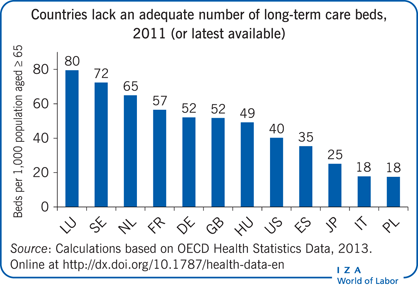Elevator pitch
The demand for institutional long-term care is likely to remain high in OECD countries, because of longer life expectancy and falling cohabitation rates of the elderly with family members. As shortages of qualified nurses put a cap on the supply of beds at nursing homes, excess demand builds. That puts upward pressure on prices, which may not reflect the quality of the services that are provided. Monitoring the quality of nursing home services is high on the agenda of OECD governments. Enlisting feedback from family visitors and introducing portable benefits might improve quality at little extra cost.

Key findings
Pros
Portable old-age allowances empower the elderly and thus may help improve the quality of long-term care services.
Many elderly residents in long-term care institutions receive regular visits from family, who can be enlisted to help monitor service quality.
Ombuds systems and adult guardianship could also be implemented more widely to monitor institutional long-term care services.
New forms of nursing home architecture with individual homes for each resident offer more independence and could improve the quality of care and living standards.
Cons
The excess demand for nursing home residence is likely to worsen because of shortages of skilled nurses rather than because of any difficulties caused by regulatory requirements.
Excess demand keeps prices high while offering little incentive to improve the quality of services offered.
Portable allowances, if provided as cash benefits, may be appropriated by relatives of the elderly.
New forms of nursing home architecture with individual living arrangements for each resident can be very expensive.